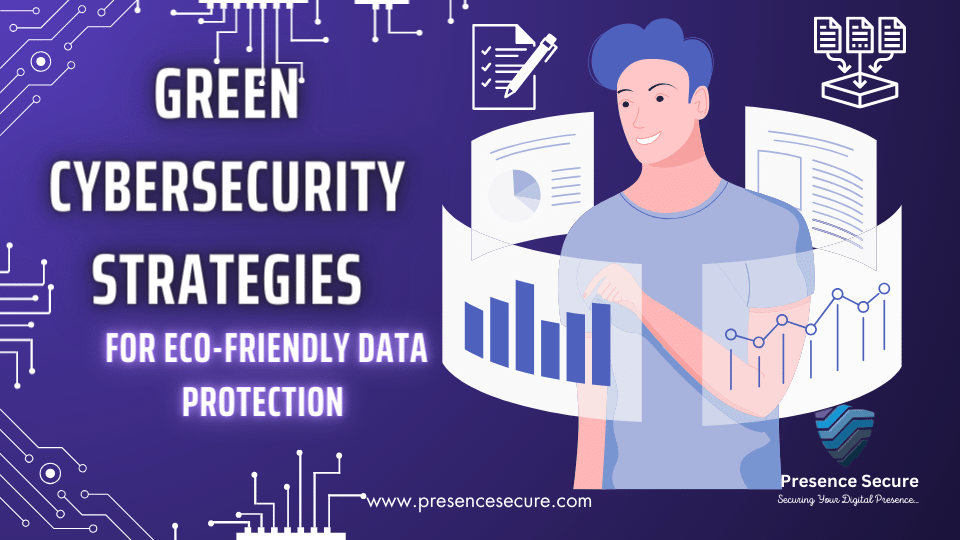Data protection is paramount, in today’s digital world as there’s a growing awareness of the need for eco-friendly cyber security strategies. Just like building a fortress to safeguard valuable assets, it’s also important to consider the environmental impact of our digital defenses. Green cyber security strategies aim to balance protecting sensitive data and minimizing the carbon footprint associated with cyber security measures.
Imagine fortifying your digital castle while also being mindful of the resources you use. Traditional cyber security measures, such as data centers, security hardware, and encryption protocols, consume vast amounts of energy and resources. Data centers, in particular, are notorious for their high energy consumption, which contributes to carbon emissions and environmental degradation. Additionally, the manufacturing and disposal of electronic devices used in cyber security add to electronic waste, further worsening environmental concerns. Proper disposal of waste bins and security devices containing sensitive information through shredding and repurposing is an eco-friendly cybersecurity strategy.
But the good news is that there are ways to make cyber security more environmentally friendly without compromising data protection. One approach is to optimize the efficiency of data centers by using energy-efficient hardware and implementing renewable energy sources. By harnessing solar or wind power, data centers can reduce their reliance on fossil fuels and minimize their carbon footprint. Another strategy is to embrace virtualization and cloud computing technologies, which can improve resource utilization and reduce energy consumption. By consolidating servers and optimizing workloads, organizations can maximize the efficiency of their digital infrastructure while minimizing environmental impact.
Furthermore, organizations can adopt sustainable procurement practices by choosing electronic devices and hardware components such as security cameras with energy-efficient designs and environmentally friendly manufacturing processes. By prioritizing products with eco-friendly certifications and labels, such as ENERGY STAR or EPEAT, organizations can ensure that their digital defenses align with their sustainability goals.
Moreover, integrating sustainability considerations into cyber security strategies can lead to innovative solutions that minimize resource consumption. For example, developing lightweight encryption algorithms that require less computational power can reduce energy consumption while maintaining data security. Education and awareness play a crucial role in promoting green cyber security practices. Organizations can foster a culture of environmental responsibility by educating employees about the environmental impact of cyber security measures and encouraging sustainable behaviors.
In conclusion, green cyber security strategies offer a holistic approach to data protection that considers both security and sustainability. Organizations can minimize their environmental footprint while safeguarding sensitive data by optimizing resource utilization, embracing renewable energy sources, and promoting sustainable procurement practices. Adopting green cyber security strategies is essential for building a secure and sustainable future in the digital age, where data protection needs are ever-present.

